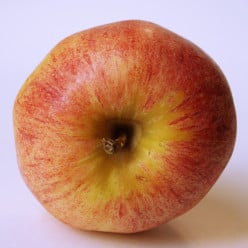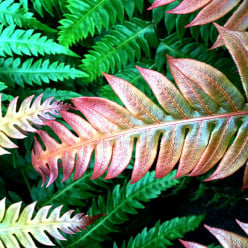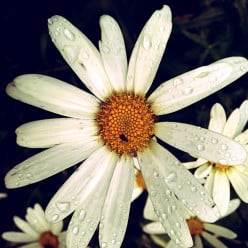A list of animals that exist or have existed in the world.
There are so many animals in the world that exist today and have existed in the past. As I person who has not had much of an opportunity for travel, I wanted to put together a list of all known animals and find out a bit more about the ones that I am not aware of.
Please list you chosen animal and tell me a little about it if you can
Maybe together we can make others aware of the animals that exist today and some of the problems they face in sustaining a future.Livestock and human make 94% of the mammals mass weight on earth. About 95% of all species of animals that ever lived on the earth are gone.
Ok, nobody has posted a response yet, so I will get it started...
A Pink Dolphin in some part of America - is this true?
I saw a photo posted on face book but it could be a fake.Apparently pink dolphins do exist, they're called Amazon river dolphins: https://en.wikipedia.org/wiki/Amazon_river_dolphin
(Some of those pink dolphin images may be fake though. There's one photoshopped to have Barney the dinosaur's purple color. That one raises suspicion.)
If you're interested in looking at the animals that exist and have existed, you might like this tree of life: http://www.ancestorstale.net/OneZoom/st … es/AT.html
What's interesting is that animals are a tiny fraction of all life on Earth, and vertebrates like us are a tiny fraction of all animals."What's interesting is that animals are a tiny fraction of all life on Earth, and vertebrates like us are a tiny fraction of all animals."
Yes, we (and the animals we love) are but a tiny part of life on earth. There is more krill (bottom of the sea's food chain) for example, than there is human life by weight and bacteria outweigh all other life forms combined.
And they all work together - even e coli has it's place - to think that any one animal is more "important" that another is not supported in nature.Thanks wilderness, I find it so exciting that pink dolphins do exist, I had to ask as I am suspicious of anything on facebook, lol.
I know only a little about bacteria and the role that they place in the life cycle and I think everything in nature is equally important.
I find it a beautiful thing to know that something that was once a bacteria or a fish, has evolved and is now living on the land.
If I could spend some time at the bottom of the sea, I know that I would be amazed - I could study the life there for hours if I were given the opportunity.
Thanks for the input
Thanks mrpopo, I will check out the link that you sent me on the pink dolphins, this excites me so much!
It is difficult to believe anything you see on facebook and it is great to have it confirmed.
The earth is such an enormous place and nature and it it holds is so beautiful - there is more out there than most of us know and I cannot wait to find out more.
Thanks for the link and the input
The most amazing of all creatures is the horse. Their magnificent bodies are the result of grass, hay, oats and alfalfa. Before tractors, they made plowing farmland possible. Before cars, they made travel possible.
http://horses.about.com/od/feedingyourh … es-Eat.htm
Donkeys are kind, gentle creatures and are not stubborn, just cautious. They are very easy to care for and are very healthy. Female donkeys never need assistance when giving birth. Donkeys are great for keeping away coyotes. I wish I had one.
Mules have been very helpful to man throughout time.
http://luckythreeranch.com/lucky-three- … ule-facts/
And where would we be without the assistance of dogs? Their love and devotion to us is astounding.
https://www.smartrecruiters.com/blog/to … -for-dogs/
Cats are loving and when they love you enough to consider your their own they will bring you freshly killed rats. Where would we be without these playful, jovial creatures scampering about our feet and lurking in our gardens?
http://pestweb.com/pests-in-the-news/be … and-mouserHi Kathryn L Hill,
The horse is an exceptional animal and I love how gentle and responsive they can be towards humans. I think sometimes that we should go back to the days before cars as it would be much better for the environment
My dad had a horse when I was a kid and he used to rest his head on my shoulder when he wanted an apple.
You taught me something about the donkey - I had the impression that they were stubborn but they are smart and cautious instead, I would consider that to be a natural intelligence.
I love dogs and have two of them myself - English Staffordshires'. They are sweet dogs and highly intelligent, they give me such joy daily. I do find cats cute but I have had them in the past and I had a lot of problems keeping them off of my kitchen counters - I could not handle that so as time went on, I stuck with dogs but kinds are very playful and you would need a good rat catcher in the country.
Thanks for your input and the links
You are welcome and thanks for a great prompt.
look at the evolution of a horse, speaking of creatures that "have existed:"
https://en.wikipedia.org/wiki/Equidae
"The oldest known fossils assigned to Equidae date from the early Eocene, 54 million years ago. They used to be assigned to the genus Hyracotherium, but the type species of that genus now is regarded to be not a member of this family. The other species have been split off into different genera. These early Equidae were fox-sized animals with three toes on the hind feet, and four on the front feet. They were herbivorous browsers on relatively soft plants, and already adapted for running. The complexity of their brains suggest that they already were alert and intelligent animals. Later species reduced the number of toes, and developed teeth more suited for grinding up grasses and other tough plant food.
The family became relatively diverse during the Miocene, with many new species appearing. By this time, equids were more truly horse-like, having developed the typical body shape of the modern animals. Many of these species bore the main weight of their bodies on their central, third, toe, with the others becoming reduced, and barely touching the ground, if at all. The sole surviving genus, Equus, had evolved by the early Pleistocene, and spread rapidly through the world."
(From the above link)More on donkeys"
"Donkeys have a notorious reputation for stubbornness, but this has been attributed to a much stronger sense of self-preservation than exhibited by horses. Likely based on a stronger prey instinct and a weaker connection with man, it is considerably more difficult to force or frighten a donkey into doing something it perceives to be dangerous for whatever reason, and donkeys can react violently when they do feel threatened. Once a person has earned their confidence they can be willing and companionable partners and very dependable in work.
Although formal studies of their behaviour and cognition are rather limited, donkeys appear to be quite intelligent, cautious, friendly, playful, and eager to learn."
Donkeys spend their days resting during the hottest part of the day. They are more active during the mornings and evenings, traveling and eating with the herd."
https://en.wikipedia.org/wiki/Donkey
Domestic donkeys are typically used for pack animals or for milk. Donkeys protect livestock from predators by stomping their feet.
Donkeys are voracious eaters and consume up to 6,000 lbs. of food per year. (This is concerning when feral donkeys move into local habitats.) Donkeys eat grass, shrubs and desert plants. Instead of ripping out grass with their teeth, they take it with their lips, pull it into their mouths, and use their flat teeth to grind it.
Donkeys don’t care who’s in their herd and aren't picky about who they breed with. They happily breed with donkeys, horses and zebras. A male donkey, (jack) and a female horse will produce a mule. A female donkey (jenny or jennet) and a male horse will produce a hinny. A zebra and a donkey will produce a zebroid, zonkey or zeedonk. Hybrids are not able to produce offspring. A Donkey baby is called a foal and is born after a full year. The foal can stand to nurse thirty minutes after it is born. They can mate after two years.This is amazing! I am discovering a whole new side to the donkey that I did not know existed. I feel sorry for the offspring of the zebra and donkey - poor thing, zeedonk, what a thing to be called and donkeys and zebras are both so cute

I also had no idea that they are used for their milk either.
You have a lot of knowledge Kathryn, thank you - I love it
At LA Zoo, where my daughter volunteers as a vet tech, she sees many animals and witnesses and (sometimes) assists with their treatments. She always wanted to go to Africa and treat the ones who need help on the plains and in the jungles. She now realizes that would be a very hard life with little financial compensation. Some of her co-workers who visited Africa as veterinarians reported this reality to her.
She said the donkey in the petting area of the zoo is not very friendly, but when I told her about the true nature of donkeys, she said she would see if she could make friends with it over time.
https://en.wikipedia.org/wiki/DonkeyLet me know how she went, I would be interested to find out. If this forum is not around when you know, just send a message to my profile

okay. I will probably join her once in a while.

What I would really like to do is visit the "mother" of Koko. (Penny Patterson) Koko is already 45 years old. They tried to get her to mate, but it didn't work out. She is probably a freak to the male gorilla of her choice, Ndume, who she lives with … too human-like.
https://www.youtube.com/watch?v=hypMW4hdVFE
"Patterson has reported that Koko has made several complex uses of signs that suggest a more developed degree of cognition than is usually attributed to non-human primates and their use of communication. For example, Koko has been reported to use displacement (the ability to communicate about objects not currently present), signing the sign for "baby" the day after her baby was removed from her. At age 19, Koko was also able to pass the mirror test of self recognition, which most other gorillas fail. She has also been reported to relay personal memories. Koko has also been reported to use meta-language, being able to use language reflexively to speak about language itself, signing "good sign" to another gorilla who successfully used signing. Koko has also been reported to use language deceptively, and to use counterfactual statements for humorous effects, suggesting an underlying theory of other minds.
Patterson also reports that she has documented Koko inventing new signs to communicate novel thoughts. For example, she says that nobody taught Koko the word for "ring", but to refer to it, Koko combined the words "finger" and "bracelet", hence "finger-bracelet".
Criticism from some scientists centers on the fact that while publications often appear in the popular press about Koko, scientific publications with substantial data are fewer in number.
Koko's training began at the age of 1, and now, according to Patterson, she can use more than 1,000 signs."
https://en.wikipedia.org/wiki/Koko_(gorilla)
Recently I have become interested in gorillas. I heard they are not mature until ten years old. I would like to research their childhood and development into adulthood.
"Life cycle
Females become sexually mature at 7-8 years old, but do not start to breed until several years later. Males mature later than females, with few breeding before the age of 15 years.
High infant mortality, a long gestation (8.5 months), a tendency to single births, and a prolonged period of maternal care mean that, on average, only one baby is reared in a 4-6 year period. Females generally give birth to only three or four surviving young during their reproductive life.
The mortality rate for gorillas less than one year old is high, but for adults the rate is only 5%. In the wild, they might live to be 40 years old. In the United States, a captive gorilla was reported to have lived to the age of 54.
http://wwf.panda.org/what_we_do/endange … /gorillas/
"Gorilla infants are helpless at birth and weigh about 3-4 lbs. They learn to crawl at about 2 months and are walking by the time they are around 8 or 9 months. Mother gorillas nurse their babies for about 3 years, following which the young become more independent."
http://www.defenders.org/gorilla/basic-facts
"Gorilla infants are vulnerable and dependent, thus mothers, their primary caregivers, are important to their survival. Male gorillas are not active in caring for the young, but they do play a role in socialising them to other youngsters. The silverback has a largely supportive relationship with the infants in his troop and shields them from aggression within the group. Infants remain in contact with their mothers for the first five months and mothers stay near the silverback for protection. Infants suckle at least once per hour and sleep with their mothers in the same nest.
Infants begin to break contact with their mothers after five months, but only for a brief period each time. By 12 months old, infants move up to five meters (16.4 ft) from their mothers. At around 18–21 months, the distance between mother and offspring increases and they regularly spend time away from each other. In addition, nursing decreases to once every two hours. Infants spend only half of their time with their mothers by 30 months. They enter their juvenile period at their third year, and this lasts until their sixth year. At this time, gorillas are weaned and they sleep in a separate nest from their mothers. After their offspring are weaned, females begin to ovulate and soon become pregnant again."
https://en.wikipedia.org/wiki/Gorilla'You should check out some of Koko the gorilla's content. My favourite is the one with Robin Williams: https://www.youtube.com/watch?v=I9I_QvEXDv0
Someone pointed out that she wanted Mr. Williams to tickle her because she knew his job was to make people laugh. If true, it's fascinating.Oh my goodness, how amazing. Thanks for the link. There is so much to learn about animals. But we have to keep an open mind and not inject our own unfounded interpretations and preconceptions. For instance, Robin Williams really should have been more observant. He laughed too much. What more could the two have done together besides tickle??? Koko was awesomely gentle. After he took Robin Williams glasses off, he put them on his own face and even went to the window to see out of them!!!!
I would be so afraid to be that close with a gorilla of such strength. They probably did a lot of work together as far as becoming familiar and trusting before the video taping.
https://www.youtube.com/watch?v=8oh1uhrdc6w
https://en.wikipedia.org/wiki/Koko_(gorilla)
http://nypost.com/2016/07/28/inside-the … -can-talk/
Kathryn, I love gorillas because they are such beautiful animals and it is such a shame that their environment is gradually being destroyed. I know that they are capable of aggression when provoked but they are so gentle and curious otherwise.
I remember the footage of Robin Williams and Koko that mrpopo provided the link for - that was a special moment and it would be a memory that I would never forget if I were ever able to do that
Yes, there is much that we can learn from animals.
It covers onboarding to leaving management. It provides 360 degrees of HR solution. Some of the innovative features provided are Benefits, Payroll and Compensation Management, Certify and benchmark workforce (360 Degree Certifications).
https://rcteambuilder.com/
Related Discussions
- 55
The Christian murder of perhaps, the first great female thinker.
by cjhunsinger 10 years ago
The word hypocrisy comes to mind when I read so many of the posts by Christians here. Perhaps, it is a denial of their own history that drives them or, simply, a preferred ignorance of the roots and heritage of their chosen belief system, Christianity.The story of a woman name Hypatia of Alexandria...
- 75
Name and discuss the 10 ways that religion produces fear and powerless
by Grace Marguerite Williams 11 years ago
among people?
- 45
Peaceful spread of Islam in Australia
by paarsurrey 15 years ago
Islam spread in Australia very peacefully, as per the teachings of Quran/Islam/Muhammad, this could be observed from the following account from Wikipedia:Islam in Australia is the fourth largest religious grouping, after Christianity, "No Religion", and Buddhism. According to the 2006...
- 11
Do you enjoy watcching Indian movies and what is your favorite?
by Moipone 13 years ago
I fell in live with Indian movies about 5 years ago because they have storylines that inspire and their writting is unique and although they are long they are also enjoyable.
- 11
Should a person who is suffering from a terminal illness be able to
by Mara Alexander 10 years ago
end their life by using a doctor? Yes or no, and why?
- 45
The non-mystery of consciousness
by Tony Lawrence 14 years ago
References for those unfamiliar with the babbling about this: http://richarddawkins.net/articles/554- … sciousnesshttp://en.wikipedia.org/wiki/Shadows_of_the_Mindhttp://en.wikipedia.org/wiki/Quantum_mindThere is no mystery. Our brains are just chemical and electrical machines that...











